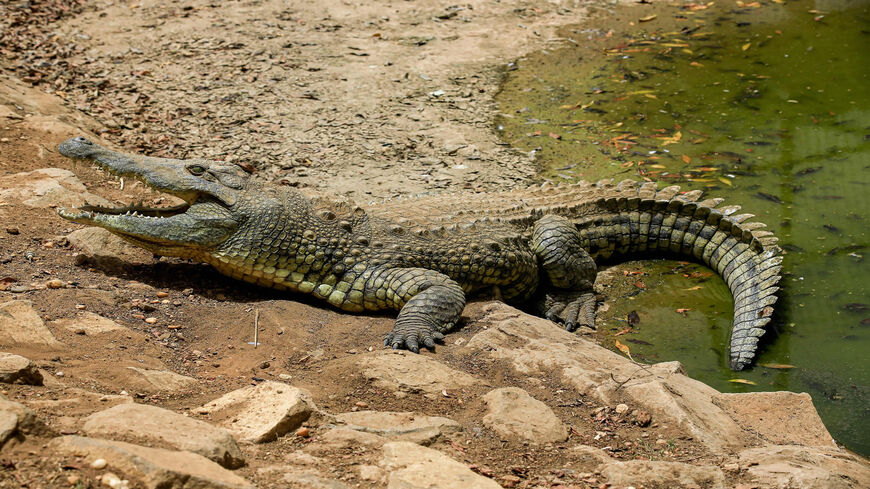A video of a crocodile in the Nile in Luxor circulated on social media on 12 July, sparking widespread panic. Authorities advised residents in the Kalh area of Esna city, particularly those living near the Nile, to keep their children from swimming in the river.
The most commonly found crocodile in Egypt is the Nile crocodile. In 2016, a video of a Nile Crocodile on the banks of a tributary in Mostorod, Shubra, spread on Egyptian social media.
What is the Nile Crocodile?
In the heart of Africa’s fresh waterways, a formidable inhabitant thrives within the sweeping currents of the Nile River. Renowned for its aggressive behavior and powerful jaws, the Nile Crocodile is one of Africa’s diverse wildlife, widespread throughout sub-Saharan Africa, the Nile Basin, and Madagascar. It thrives in rivers, freshwater marshes, and mangrove swamps, showcasing its adaptability and dominance across various habitats.

It ranks as the world’s second-largest crocodile and freshwater predator, typically reaching an adult length of 4.5 meters.
Supported by four short, sturdy legs and a long, muscular tail, its average weight is 225 kilograms but could weigh up to 748.5 kilograms. In the wild, Nile crocodiles typically live around 45 years, but they have been known to reach the age of 80 in captivity, where they are free from natural predators and environmental stresses.
During the breeding season in November and December, female Nile crocodiles nest on sandy shorelines, dry stream beds, or riverbanks, laying between 25 to 100 eggs. Their diet primarily consists of fish, but they are opportunistic hunters, preying on zebras, small hippos, porcupines, birds, and even other crocodiles. Eating dead animals is also common, with the ability to consume up to half their body weight in one feeding.
Nile crocodiles, often feared for their reputation, are indispensable to the ecosystem. As apex predators, they are essential in preserving species equilibrium within their habitats.
As its habitat is close to human settlements, encounters are common and interactions are marked by tension. With an almost indiscriminate diet, they could eat a human near a riverbank.
Reliable figures are hard to come by, but it’s estimated that up to 200 people may fall victim to these predators each year, according to National Geographic.
The Nile Crocodile in Ancient Egypt
The Nile crocodile is one of the earliest animals to be portrayed in art, the crocodile appeared in ancient texts, symbolizing the eternal conflict between good and evil, according to a 2021 study by Matrouh University.
“Crocodiles were associated with the Nile, its fertility, and with royal and military power,” the study explained.
The ancient Egyptians’ reverence for animals was unparalleled, especially the crocodile, extending beyond mere veneration; ancient Egyptians honored the crocodile as a god in the name of ‘Sobek,’ which was depicted as a human with a crocodile head, worshiped in 1991 B.C.

The Nile crocodile was regarded as a protector and a demon, even bred and sacrificed for mummification.
As noted by scholar Michal Molcho, there is a crocodile cemetery in Fayyoum’s Tebtunis town that is home to thousands of mummified remains. The extensive number of mummies unearthed from this site implies that “the young reptiles may have been bred commercially” there.
Molcho made another discovery in Narmouthis in Fayyoum, where a crocodile nursery and hatchery revealing dozens of eggs in various stages of development was unearthed. Around 90 crocodile eggs were unburied, nestled in deep pits, being incubated. Upon hatching, the hatchlings are initially housed in shallow basins, and later subjected to ritual sacrifice and mummification.
As ancient symbols of power and fear, Nile crocodiles continue to make their presence felt in modern Egypt.







Comment (1)
[…] © Egyptian Streets […]